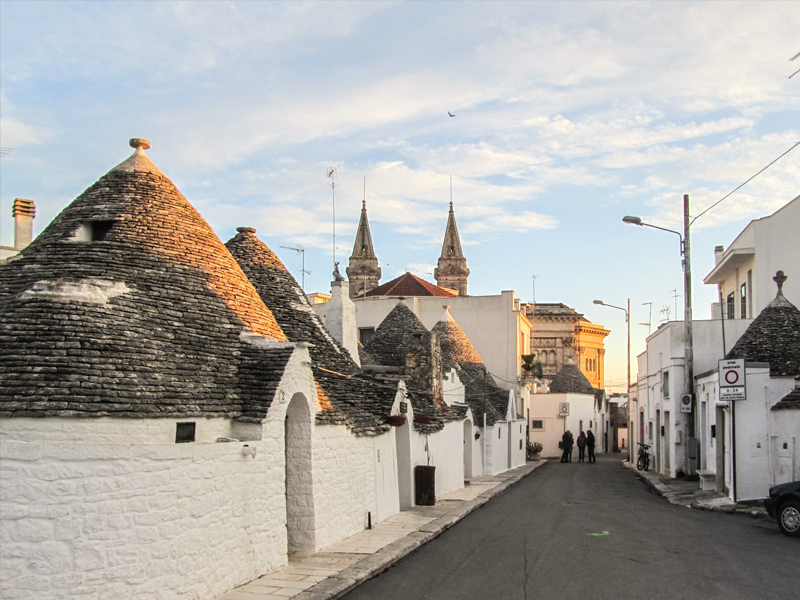
Hidden Gems in Europe 2025: Discover Lesser-Known Destinations
Hidden Gems in Europe 2025: Discover Lesser-Known Destinations
Europe is a treasure trove of iconic cities and well-known tourist destinations. But in 2025, the true magic lies in discovering the hidden gems that are often overlooked. These off-the-beaten-path locales offer a unique and authentic experience, far from the bustling crowds. Whether you’re a seasoned traveler or planning your first trip, uncovering these secret destinations in Europe will add an unforgettable dimension to your journey. In this guide, we’ll explore the best-hidden gems in Europe for 2025 and show you how to plan an affordable adventure that stays within budget.
Why Explore Hidden Gems in Europe in 2025?
While popular destinations like Paris, Rome, and Barcelona are undoubtedly worth visiting, the lesser-known spots in Europe provide a different kind of charm. These locations are often less crowded, more affordable, and offer a glimpse into the authentic culture and lifestyle of the region. In 2025, with travel trends leaning towards sustainable and immersive experiences, discovering hidden gems is the perfect way to experience Europe in a more meaningful way.
Top Hidden Gems in Europe for 2025
Let’s dive into some of the most enchanting yet under-the-radar destinations that should be on your travel list in 2025:
1. Matera, Italy
Matera, located in the Basilicata region of southern Italy, is a city carved out of limestone, making it one of the most unique destinations in Europe. The ancient cave dwellings of the Sassi di Matera are a UNESCO World Heritage Site and offer a glimpse into the city’s rich history. With fewer tourists compared to Rome or Florence, Matera provides a serene and intimate experience. Don’t miss the opportunity to stay in one of the converted cave hotels for a truly unique experience.
2. Kotor, Montenegro
Nestled between towering mountains and the Adriatic Sea, Kotor is a hidden gem in the Balkans. This picturesque town boasts medieval architecture, narrow cobblestone streets, and a stunning bay that rivals the beauty of Italy’s Amalfi Coast. Kotor is perfect for travelers seeking a peaceful retreat, with opportunities for hiking, sailing, and exploring ancient fortresses. Its off-the-beaten-path status means fewer crowds and more authentic experiences.
3. Hallstatt, Austria
Hallstatt is a postcard-perfect village located in the Austrian Alps, known for its breathtaking scenery and historic salt mines. This quaint town offers stunning views of Lake Hallstatt, surrounded by mountains, making it a perfect destination for nature lovers. While Hallstatt has gained some popularity, it remains a tranquil spot, especially if you visit in the early morning or off-season. The town’s charm lies in its traditional alpine architecture, peaceful atmosphere, and opportunities for outdoor activities like hiking and boating.
4. Braga, Portugal
Often overshadowed by Lisbon and Porto, Braga is a hidden gem in northern Portugal that offers a mix of history, culture, and modernity. Known as the “Rome of Portugal” due to its numerous churches and religious sites, Braga is also a lively city with a vibrant cultural scene. Explore the Bom Jesus do Monte sanctuary, stroll through the charming old town, and enjoy the local cuisine. Braga is an excellent destination for travelers looking to experience Portugal beyond the typical tourist trail.

Rothenburg ob der Tauber town walls with stone towers and countryside views
5. Rothenburg ob der Tauber, Germany
Step back in time with a visit to Rothenburg ob der Tauber, a beautifully preserved medieval town in Bavaria, Germany. This town is straight out of a fairy tale, with its cobblestone streets, half-timbered houses, and historic fortifications. Although it attracts some tourists, especially during the Christmas season, Rothenburg remains a peaceful retreat with plenty of quiet corners to explore. Don’t miss the opportunity to walk along the town walls for panoramic views of the surrounding countryside.
6. Sibiu, Romania
Sibiu, located in the heart of Transylvania, is a charming city that beautifully blends medieval architecture with vibrant modern culture. Known for its well-preserved old town, colorful buildings, and gothic churches, Sibiu offers a unique experience for those interested in history and culture. The city’s lively arts scene, numerous festivals, and the surrounding Carpathian Mountains make it an ideal destination for both urban explorers and nature lovers.
7. Gjirokastër, Albania
Gjirokastër is a UNESCO World Heritage site located in southern Albania. Often referred to as the “City of Stone,” this town is famous for its unique Ottoman-era architecture, with many houses resembling small castles. Gjirokastër offers a deep dive into Albanian culture, with its historical sites, including the Gjirokastër Fortress, and its vibrant local markets. It’s a perfect destination for travelers seeking an authentic and lesser-known Balkan experience.
8. Alesund, Norway
Alesund, a picturesque coastal town in Norway, is renowned for its stunning Art Nouveau architecture and its location surrounded by fjords and mountains. The town’s unique layout, rebuilt after a fire in 1904, makes it one of Norway’s most visually striking locations. Alesund is an excellent base for exploring the nearby Geirangerfjord, one of the most famous fjords in Norway, as well as the surrounding islands and mountains.
9. Colmar, France
Colmar, located in the Alsace region of northeastern France, is a fairytale-like town with colorful half-timbered houses, winding cobblestone streets, and charming canals. Often overshadowed by larger French cities, Colmar offers an intimate and enchanting experience, especially for those interested in wine, as it lies along the famous Alsace Wine Route. The town’s beautiful architecture and vibrant atmosphere make it a perfect stop for a leisurely European trip.
10. Trogir, Croatia
Trogir is a small, historic town on the Dalmatian coast of Croatia, often overshadowed by nearby Split. This medieval town is a UNESCO World Heritage site, known for its well-preserved Romanesque and Gothic architecture. Trogir’s narrow streets, ancient churches, and stunning waterfront make it an ideal destination for those looking to experience the authentic charm of the Croatian coast without the crowds.
11. Faro, Portugal
Faro, the capital of Portugal’s Algarve region, is often overlooked in favor of its more famous neighbors like Lagos and Albufeira. However, Faro offers a unique blend of cultural heritage and natural beauty, with its well-preserved old town, Roman ruins, and access to the Ria Formosa Natural Park. This town is perfect for travelers who want to enjoy the Algarve’s beautiful beaches while also exploring its historical and cultural offerings.
12. Český Krumlov, Czech Republic
Located in the South Bohemian region of the Czech Republic, Český Krumlov is a small town that feels like a step back in time. With its stunning castle, winding river, and well-preserved medieval old town, Český Krumlov offers a magical atmosphere. Despite its growing popularity, it remains relatively uncrowded compared to Prague, making it an ideal destination for those seeking a quieter, yet equally enchanting, Czech experience.
How to Plan a Europe Trip on a Budget in 2025
Traveling to Europe doesn’t have to break the bank. By focusing on hidden gems and off-the-beaten-path destinations, you can enjoy a more affordable and authentic experience. Here are some tips to help you plan a budget-friendly Europe trip in 2025:
- Travel Off-Season: Visiting Europe during the shoulder or off-season (late fall, winter, early spring) can significantly reduce costs for flights, accommodations, and attractions.
- Choose Budget-Friendly Destinations: Lesser-known destinations like those mentioned above often offer more affordable prices than popular tourist hotspots.
- Use Public Transportation: Save money by using trains, buses, and other forms of public transport. Consider purchasing a Eurail pass for extensive train travel across multiple countries.
- Stay in Budget Accommodations: Opt for hostels, guesthouses, or vacation rentals instead of expensive hotels. In some hidden gems, you might even find charming and affordable boutique hotels.
- Eat Like a Local: Enjoy local cuisine at street food stalls, markets, or small family-run restaurants. This not only saves money but also provides a more authentic culinary experience.
- Look for Free Activities: Many European cities offer free walking tours, public parks, and museums with free entry on certain days.
Why Hidden Gems Are the Future of European Travel
The travel landscape is changing, and 2025 is poised to be a year where more travelers seek out unique, less crowded, and sustainable destinations. Hidden gems in Europe offer the perfect opportunity to experience the continent’s rich history, culture, and natural beauty without the overwhelming tourist crowds. As more people discover the joys of off-the-beaten-path travel, these lesser-known destinations are set to become the new highlights of European adventures.
For more travel tips and destination guides, be sure to check out our blog and start planning your 2025 European adventure today!
Ready to explore Europe’s hidden gems? Book your accommodation now at HotelsFee and get ready for an unforgettable journey!




















